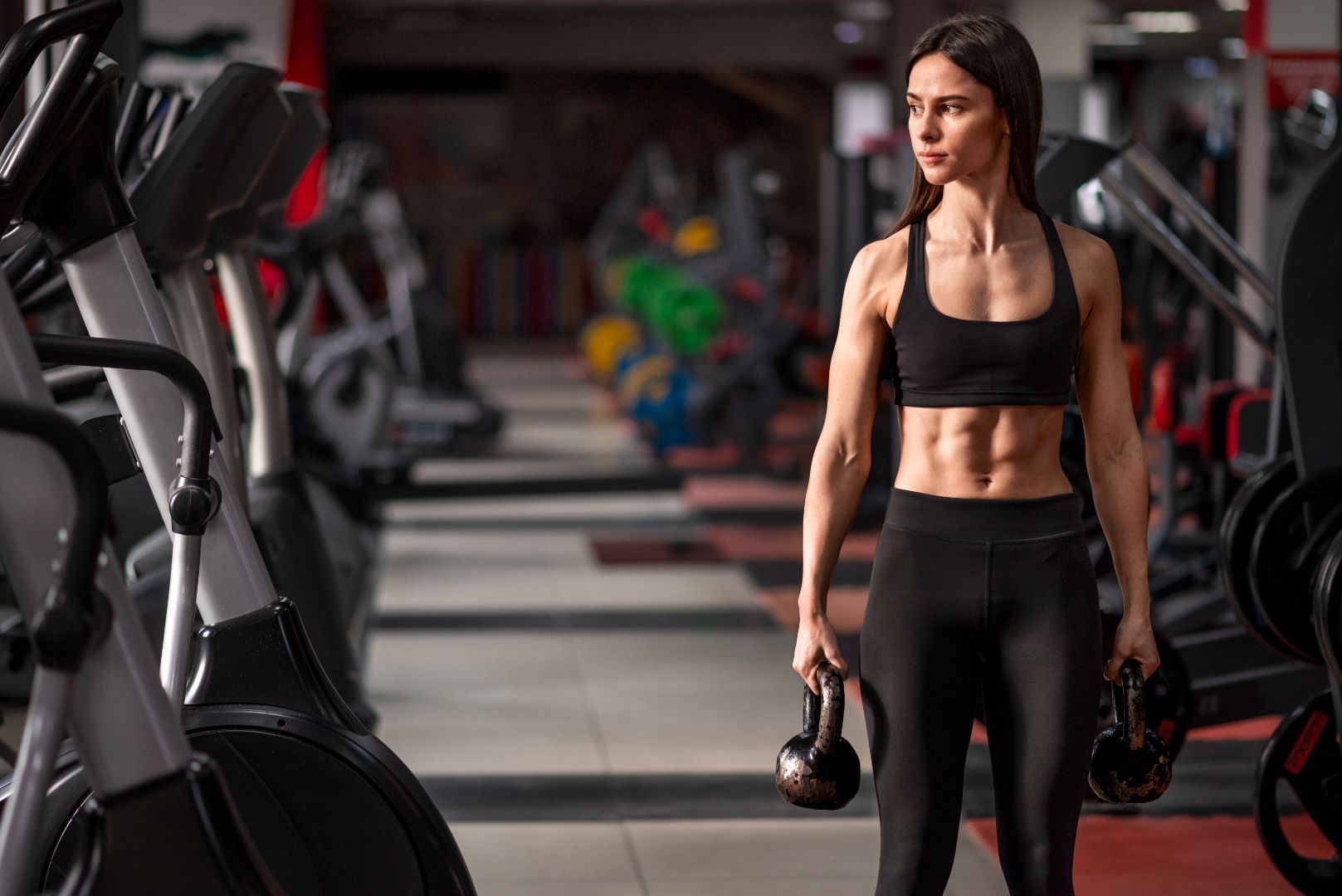Starting strength training can feel empowering, but also overwhelming. One of the first choices beginners face is the classic free weights vs machines debate. This choice can shape how fast you build strength, how confident you feel in the gym, and how well you avoid injuries in the early stages.
For many, machines seem safe and easy to use, while free weights offer more freedom, but also more room for error. If you are feeling confused about which one to start with, you are definitely not alone.
In this guide, we will break down the pros and cons of each, compare how they affect your workouts, and help you figure out the best place to start based on your goals. Let’s get you lifting with some confidence.
What Beginners Should Know About Free Weights
Free weights are any type of gym equipment that you can lift and move freely through space without being fixed to a machine or guided path. They are called “free” because they don’t rely on pulleys, cables, or tracks to control your movement. That means you are in full control of how the weight moves, both a blessing and a challenge.
Common examples of free weights include:
- Dumbbells: great for single-arm or isolated movements (curls, presses, flys)
- Barbells: ideal for heavy compound lifts (squats, deadlifts, and bench presses)
- Kettlebells: perfect for dynamic exercises (swings, snatches, and Turkish get-ups)
- Weight plates and medicine balls
Unlike machines, free weights allow unrestricted movements, which means your body has to stabilize and coordinate every rep you do. That’s where the magic, and the difficulty, comes in.
What are the Benefits of Free Weights?
While they may look simple, free weights offer powerful benefits, especially when used correctly. Here’s why fitness professionals consider them essential for building long-term strength and coordination:
- Engages Stabilizer Muscles
When using free weights, your body isn’t being supported or guided by a machine. That means your core and smaller stabilizing muscles must activate to control each movement. The result? A more balanced, well-rounded strength foundation that supports everyday movement.
- Develops Functional Strength
Free weights allow you to train in patterns that replicate real-life tasks, like lifting groceries, climbing stairs, or pushing heavy doors. This is called functional training, and it is key to building strength you can actually use outside the gym.
- Allows Greater Range of Motion
Machines often limit how far you can stretch or contract a muscle. With free weights, you are free to move through your full range of motion, which helps improve joint mobility and build muscle more effectively over time.
- Offers Versatility in Training
A single pair of dumbbells can unlock dozens of exercises. Free weights are highly versatile. You can train multiple muscle groups, combine upper and lower body moves, and easily scale your workouts as you progress. This makes free weights excellent for at-home workouts or travel-friendly routines.
- More Cost-Effective and Space-Saving (for Home Gyms)
If you are training at home, free weights take up less space and cost less than bulky machines. An adjustable dumbbell or a barbell set can cover most of your strength training needs.
What are the Drawbacks of Free Weights?
Of course, with freedom comes responsibility. While free weights offer more flexibility, they also demand more awareness, coordination, and technique. Here’s what to keep in mind when using free weights:
- Steeper Learning Curve: If form is off, there’s a greater risk of injury. Lifting free weights means investing more time into learning proper techniques through a coach or beginner workout programs.
- Requires More Focus: You need to pay attention to body alignment, breathing, and muscle engagement. For beginners, that might feel intimidating at first if you’re not used to self-correction.
- Not Always Beginner-Safe: If you’re literally brand-new to fitness or recovering from an injury, the freedom of movement can be risky without professional supervision.
Free Weights vs Machines: Key Differences
For us to get a better perspective, let’s explore how these two options stack up across some major factors:
| Factor | Free Weights | Machines |
| Range of Motion | Natural, full-body movements | Fixed, limited motion |
| Stabiliser Muscles | Engaged | Minimally used |
| Form & Technique | Requires proper knowledge | Easier for beginners |
| Injury Risk | Higher if the form is incorrect | Lower due to guided motion |
| Versatility | Highly versatile | Usually isolates specific muscles |
| Progression | Smooth, scalable | May require plate changes or upgrades |
| Space Required | Less space | Requires gym access for bulky machines |
Which One Should a Beginner Start With?
Here is the truth between free weights vs machines: there is no one-size-fits-all answer. The best choice is through careful consideration of your goals, physical condition, and comfort level. To understand it further, we’ll break it down for you:
Choose Machines If:
- You’re new to the gym and want to build confidence.
- You’re returning after an injury or a long break.
- You prefer a structured, no-fuss workout.
- You want to focus on specific muscle groups.
Choose Free Weights If:
- You want to build functional strength.
- You’re training for sports, balance, or coordination.
- You plan to work out at home or with limited equipment.
- You’re comfortable learning new movement patterns.
Tip: Start with machines to learn movement patterns safely, then gradually increase or introduce free weights as your strength and confidence grow.
Can You Combine Free Weights and Machines?
The answer is yes. A balanced program that integrates machines and free weights is ideal for most people. Start your workout with machine-based warm-ups or isolation work, then move to free weights for compound lifts. Here is a free sample you can use for a combined workout routine:
Full Body Workout:
| Excercise | Type | Target Area |
| Seated Leg Press | Machine | Quads, glutes |
| Dumbbell Chest Press | Free weights | Chest, shoulders |
| Lat Pulldown | Machine | Back, Biceps |
| Goblet Squat | Free weights | Lower body, core |
| Cable Row | Machine | Mid-back |
| Dumbbell Shoulder Press | Free weights | Shoulder, arms |
This method is hybrid; it allows you to ease into free weights without ditching the safety of machines.
Common Misconceptions about Free Weights and Machines
- Free weights are always better: Machines, especially in beginner programming or rehab, serve a purpose. The difference between the two is not about being superior to the other; it’s about what works well for you at the moment.
- You can’t build muscles on machines: Machines can absolutely help with muscle growth, mainly if you focus on progressive overload and proper form.
- Machines are not only for beginners. Advanced lifters commonly incorporate machines with free weights for accessory work, which also includes isolation exercises and injury prevention.
Safety Tips for Beginners
Regardless of what you choose, safety always comes first. Here are a few essentials:
- Start Light and focus on form, not the weight. Gradually increase resistance if your body is capable.
- Use mirrors or record yourself to check alignment. Proper form is the most essential knowledge in safely progressing your fitness journey.
- Don’t skip warm-ups such as cardio and mobility. Warm-ups go a long way and will definitely help your routines to be successful.
- Stay hydrated through your session. Learning how to hydrate properly is vital for recovery.
- Ask for help from a professional or staff member if unsure.
- Listen to your body when it is time to rest or stop. It is a misconception that pain is gain.
How to Progress Over Time
Fitness is not a one-time routine, and you need to follow a path as you work on your health to get more confident. Here is a simple one everyone can follow:
- Week 1-2: Start with machines to build mind-muscle coordination.
- Weeks 3-4: Integrate free weights, such as dumbbells, in your routine. Some goblet squats or dumbbell rows.
- Week 5 and beyond: Begin learning barbell lifts with proper guidance and supervision.
Combine this with a beginner workout plan, proper nutrition, and a hydration strategy, and you’ll be on your way to lasting good health.
Free Weights vs Machines: What’s Final?
We have discussed every detail of free weights and machines. Now, here is the bottom line: Machines are excellent for beginners who require structure, safety, and confidence. Free weights, on the other hand, offer functional strength, versatility, and deeper muscle engagement.
The best approach? Both. Don’t let gym stereotypes limit your potential. There is no hard rule that says you have to stick exclusively with machines. Each has its place and proper time. Start where you’re comfortable and build from there. If machines help you feel more confident and keep you coming back, that’s a win.
At the end of the day, consistency, proper form, and a program tailored to your personal growth and goals will drive your success. Whether you’re pressing a barbell overhead or using a chest press, what matters most is that you are showing up, doing the work. A dumbbell and weight stack provide you with the same progress; your body only knows the effort you put in.
Give yourself time and permission to explore, experiment, and evolve. Strength doesn’t come from equipment. It comes from commitment.


